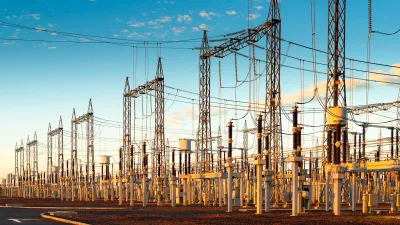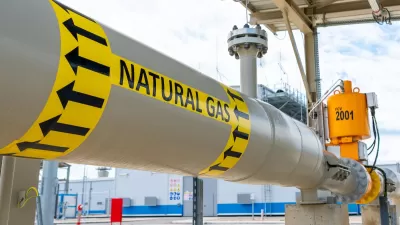While it’s unlikely to expect local and state governments to insist that data center developments locate somewhere else, specific policy steps can ensure a more positive impact for communities.

Ivy Main reports on the proliferation of data centers in Virginia. While the appeal of such developments is well documented, and mostly succeeding in finding space in local land use regulations, there are also, less well documented, drawbacks.
First, Main explains the case for data centers:
Data centers pay a lot of local taxes while requiring little in the way of local services, and the steady buildout has supported thousands of construction jobs across the region. Indeed, so many data center companies have chosen to locate in Northern Virginia that we now host the largest concentration of data centers in the world. No wonder other regions of the commonwealth are angling to bring data centers to their neck of the woods too.
But then there are some of the drawbacks:
To drive through Data Center Alley is to witness suburban sprawl on steroids, with its attendant deforestation, loss of farmland and loss of wildlife habitat. The environmental destruction doesn’t stop at a facility’s property line; a single building covers acres of land, causing massive rainwater runoff problems that can impact streams and drinking water resources miles downstream.
Main also lists water consumption, noise pollution, air pollution, and energy inefficiencies as other problems created by Virginia’s data centers. The headline of the article says the state “has a data center problem.” The lede says it’s actually “several data center problems.”
The article digs into why Virginia has so many data centers, which includes policies set at the regional and state levels. Main also suggests some policy changes to help mitigate some of the negative effects of the state’s data centers.
FULL STORY: Virginia has a data center problem

Alabama: Trump Terminates Settlements for Black Communities Harmed By Raw Sewage
Trump deemed the landmark civil rights agreement “illegal DEI and environmental justice policy.”

Planetizen Federal Action Tracker
A weekly monitor of how Trump’s orders and actions are impacting planners and planning in America.

The 120 Year Old Tiny Home Villages That Sheltered San Francisco’s Earthquake Refugees
More than a century ago, San Francisco mobilized to house thousands of residents displaced by the 1906 earthquake. Could their strategy offer a model for the present?

In Both Crashes and Crime, Public Transportation is Far Safer than Driving
Contrary to popular assumptions, public transportation has far lower crash and crime rates than automobile travel. For safer communities, improve and encourage transit travel.

Report: Zoning Reforms Should Complement Nashville’s Ambitious Transit Plan
Without reform, restrictive zoning codes will limit the impact of the city’s planned transit expansion and could exclude some of the residents who depend on transit the most.

Judge Orders Release of Frozen IRA, IIJA Funding
The decision is a victory for environmental groups who charged that freezing funds for critical infrastructure and disaster response programs caused “real and irreparable harm” to communities.
Urban Design for Planners 1: Software Tools
This six-course series explores essential urban design concepts using open source software and equips planners with the tools they need to participate fully in the urban design process.
Planning for Universal Design
Learn the tools for implementing Universal Design in planning regulations.
Clanton & Associates, Inc.
Jessamine County Fiscal Court
Institute for Housing and Urban Development Studies (IHS)
City of Grandview
Harvard GSD Executive Education
Toledo-Lucas County Plan Commissions
Salt Lake City
NYU Wagner Graduate School of Public Service





























